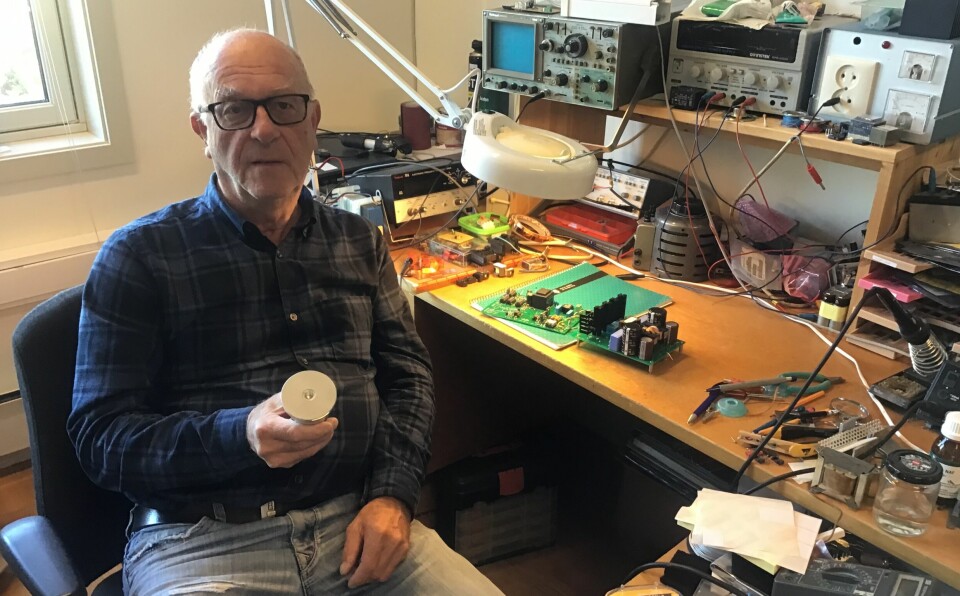
Crushing lice larvae with ultrasound
A Norwegian entrepreneur has patented a technology that will purify seawater and remove lice. After successful testing in tanks, full-scale trials in the field are planned next.
“In short, closed cages with a barrier are used, where the seawater is pumped in from outside the cage,” explains Kjell Hansen. “This goes through an ultrasound chamber and into the cage. An oversprinkling system inside the cage will create a downward draft in the water, so that it is constantly supplied with clean, disinfected water.”
Hansen is talking to Norsk Fiskeoppdrett (Norwegian Fish Farming), sister magazine of Fish Farming Expert.
The veteran electronics engineer has previously worked as a consultant for Aker Solutions and discovered almost by chance that the instruments the company used that were close to ultrasound did not get any biofouling and stayed completely clean.
“I had to investigate it a bit, and it turned out that it is the ultrasound that breaks such individuals. That was the beginning, really,” he says.
'All exploded'
His company, Giga AS, applied for a patent in 2016 and experimented in Sætre, south of Oslo, where Hansen has a laboratory. He picked some small species from a stream and exposed them to 300 watts of ultrasound in a chamber, to see what happened.
“After a very short time, they were all dead and exploded,” he says.
After this test, the company made a larger chamber and got shareholders on board. They also received government support from the Norwegian Research Council to test the method and made a 10-litre test unit powered by 1,100 watts.
“We carried out a test and it looked good. But shareholders and others who are going to invest don’t believe in Santa Claus, so we sent it to (research institute) Nofima in Tromsø who carried out tests led by Mette Wesmajervi Breiland. They ran and controlled several trials over time, starting with 1-second exposure and moving upwards. It turned out that 1100W cleaned 10 litres of water within 10 seconds, and 80% was cleaned of salmon lice larvae. 95% is possible with somewhat higher power.”
Hansen says that Giga thus had a concrete figure to deal with which to proceed.
Scaling up
“We have designed, but not constructed, a very large facility. We have come up with a shape that means that the effect we do not use to hit individuals in the water is used further in the next round. Diseases such as amoebic gill disease, infectious salmon anaemia and other organisms such as bacteria, viruses and algae spores will also be destroyed with the help of ultrasonic cavitation,” he points out.
The Giga AS founder also draws parallels to hospitals, where all surgical equipment is disinfected in ultrasound baths. It is the same method that the company uses.
The next step is to test the technology in the field, to see if results from the lab can be repeated.
“It has been tested in pools, but not on a farming site. That is where we stand now, where we have plans to create full-scale facilities,” says Hansen, who adds that hopefully things can move forward quickly.
He says the company is already in negotiations with some large companies that supply equipment to the farming industry.
“Unfortunately, I can’t say who it is, but there are two very big players,” he says.























































